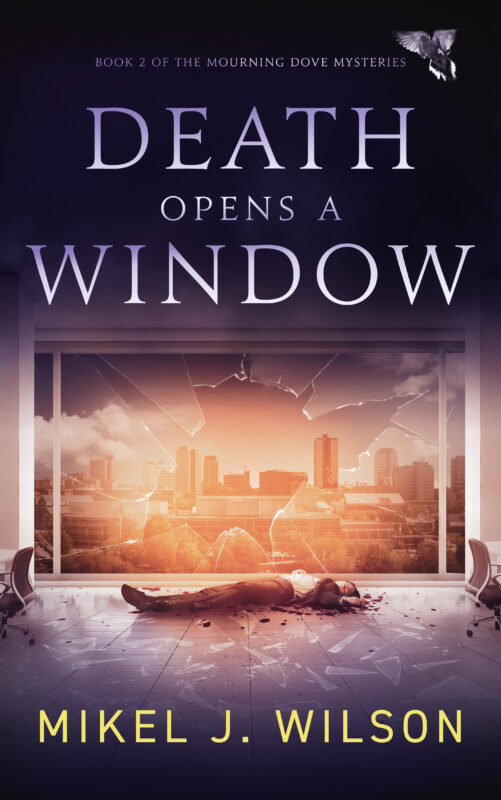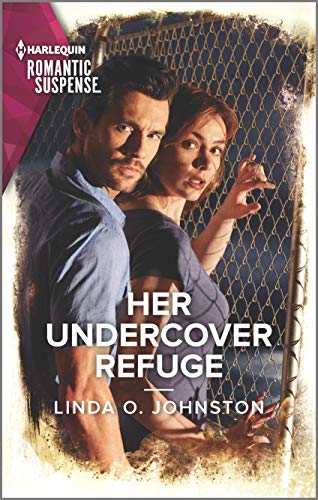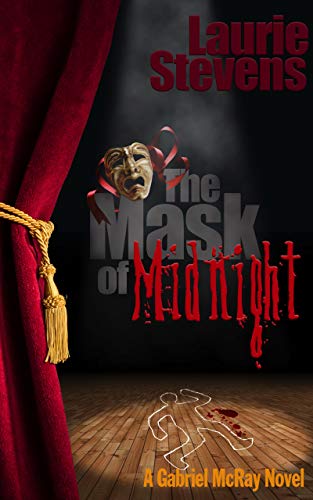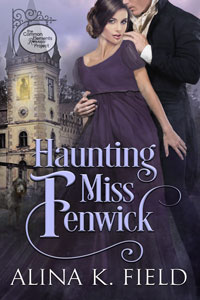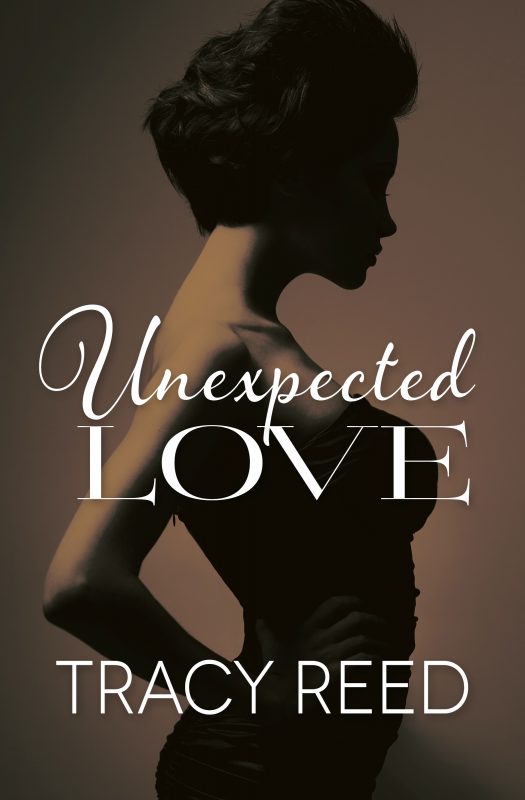Murder on the Rio Grande by Jenny Jensen
August 19, 2019 by Jenny Jensen in category On writing . . . by Jenny Jensen tagged as characters, crime novels, plotting murder, Series Characters
I’m a fan of whodunnits and crime procedurals with a special lust for a good series. It’s critical the mystery of the murder be compelling in some way—no anonymous muggings—and clues woven in with the chance to solve it, but I love that surprised frisson I get from a solution I hadn’t seen coming. It’s the characters though, that keep me coming back for more (or waiting for the next book which takes patience as a writer should be allowed some time).
It’s been said that good series characters become dear old friends; these are people you’d like to spend time with. I agree, sort of. I love Beckham’s Skelgill—what an odd and intriguing man—but I’m not sure I’d want him over for the holidays. I wouldn’t know what to say to Miss Marple. I would however, be thrilled to spend a weekend at the beach with Forster’s Finn O’Brien and Cori Anderson—they’d be a blast. Regardless, I love all my favorites simply because they are beautifully drawn characters who’s worlds are well worth sharing.
I’ve worked with several clients as they develop a series character and build a complex crime plot. It’s the NYT crossword of plot building. It’s hard work, which (as usual) means rewrite and after rewrite. It’s easy to play at though. That’s what I do when I’m waiting for the doctor or dentist—plot the murder of a fellow patient by another, build up motive and means and then the nurse calls my name. It passes the time more artfully than an ancient issue of People though I’ve been caught staring—awkward, so I’m good at a passive shrug and an innocent smile. But this morning—at 5 am to be precise—we had a real murder in the house.
A baffling, ferocious racket wakes us. My eyes fly open to meet Tom’s, one look enough to know we both know whatever it is, is in the house. Tom shoots up. I follow more cautiously into the living room to see my solid, sturdy couch rocking and pulsing like a thing possessed. A scruffy bit of fur whips frantically from beneath only to be pulled back in. A thumping commences and then a deathly silence, finally broken by the sickening crunch of breaking bone.
Hesitantly we upend the couch and Max, our maniacal Siamese, turns up triumphant blue eye and finishes the last bit of gopher, bones fur and all. In my house. In the structure of my couch. Is this murder? If you’re a gopher, yes. If you’re me, no. We have a horrible gopher problem and it’s Max’s job to sort it. But in the house? Sheesh. I contemplate killing Max.
So it’s not technically a murder. It isn’t even as good as an anonymous mugging. There is a series character though, only he’s the (serial) perp, not the detective and I like him so much he lives in my house. But there is a mystery: who didn’t lock Max’s cat door after sundown? Tom thinks it’s me but you and I dear reader, know otherwise.
~Jenny
Pivotal Moments by Kidd Wadsworth
August 18, 2019 by Kidd Wadsworth in category Infused with Meaning by Kidd Wadsworth tagged as Emotion, Story Genius, writing
Weird. Dumb-ass. Late bloomer. How wonderfully my family described me. Yeah, you guessed it. I hated me, too. At fifteen, I had the social skills of a toilet brush. I spent most of my day desperately trying to say the right thing, so maybe I’d have some friends. Only in World History did I feel accepted. With her fantastic stories, my teacher brought history alive. She encouraged discussion. Even seemed to like me.
Forty-plus years later, I still remember how the room smelled of chalk and the musky perfume of the cheerleader who sat four chairs away; how it had a cooped-up warmth from the hour-long exhaling of twenty people. We sat crammed into small desks, the kind you slid into from the side with a writing surface big enough only for a single sheet of paper. Up front sat the teacher, the green blackboard behind her filling the entire wall.

Eager to express myself, I was quick to add my opinion on socialism. I spoke against welfare and social security. Rather, I said we should take care of each other. I didn’t believe the government needed to provide these services. In fact, I thought the government did a rather poor job. I suppose I didn’t express myself well; I wasn’t clear. Even to this day, I don’t fully understand why my opinion that people should look to themselves, rather than the government, to help their neighbor, should ignite such anger. Surely, at most, I was hopelessly naïve.
For a full twenty minutes, the class raged against me, calling me mean, harsh, unkind and unfeeling. Bewildered, I tried to explain my position, but the voices only grew louder more hateful. At the end of the class, the teacher asked me to stay behind. I stood beside her desk shaking from the effort to hold back my tears. Tall and skinny, I clutched my books in front of me, my shoulders rounded down against the recent blows. I thought she would apologize to me for letting the class get out of control. I thought she saw my hurt. Instead, very gently, she said, “I’d like to tell you about the Christ.”
Perhaps I should thank her. In one sentence she managed to teach me why the separation of church and state is absolutely necessary. After all, I’d just been told by a person, put in a position of authority by the government, that my political opinions were so heinous that I must be a heathen and in need of religious indoctrination, which she was eager to supply. I politely informed her that I regularly attended church.
*
Pivotal moments in our lives are marked by strong emotions: rage, hatred, shame, regret, fear, joy, hilarity, ecstasy. It is essential that we writers learn to convey these strong emotions to our readers. Story is emotion based. If we are not feeling, we’re not reading.[1] So how does a writer learn to convey emotion? How do we teach ourselves this skill? My solution is to feel the emotion myself by first writing about a pivotal moment in my life. By grappling with my own past, by dredging up a betrayal, or the bitterness of regret, by reliving a moment of pure joy, I find that my subsequent writing tastes real. Of course, when the emotions I’m reliving are negative, the cost to me is huge, because I must bleed again, before my characters bleed at all.
Steampunk a Different Reality by Ralph Hieb
August 17, 2019 by Bethlehem Writers Group in category From a Cabin in the Woods by Members of Bethlehem Writers Group tagged as Bethlehem Writers Group, British Empire, Different Reality, Ralph Hieb, Steam Punk, Victorian
This month A Slice of Orange welcomes BWG member, Ralph Hieb.

Ralph Hieb grew up in New Jersey. After spending time overseas serving in the military, he returned home to New Jersey. While attending college he met his wife Nancy.
During the time he spent stationed Europe he didn’t miss an opportunity to travel around. Sightseeing and enjoying the culture are things that he still loves to this day.
Both Ralph and Nancy enjoy traveling to places that they have never been to, though sometimes they like to revisit former destinations. They want to visit Australia and New Zealand someday.
Ralph enjoys reading paranormal novels. He decided that he should try and write one. He is currently writing short stories, but a novel is in his future.
Steam Punk a Different Reality
I have been reading a lot of Steampunk novels lately. And I find them to be not only entertaining but very creative.
For instance if you wish to go somewhere in a hurry and it is only 1896 then you can go to the local airship terminal and board a dirigible for wherever your destination is. Then when you arrive you can either take a steam locomotive or an electric powered engine or even a steam powered carriage to the street or farm maybe even an estate that is your final destination.
Say you are going to an estate for a weekend grouse hunting. You back your Winchester gas powered, bird long barrel, weapon with spare chemical mixing tubes so that you will not run out of ammunition. Or maybe a Ruger X17R handgun with grenade launching abilities. There can be a variety of combinations or names for your weapons and their uses. Make up whatever name you like for the weapon. After all it only exists for the character in your story. I know of one individual that put a request on Facebook for people to submit names for his weapons. He received a lot of ideas.
Speaking of weapons, even clothing can be used to hold weapons, or might even become one. A man might have a small gun or knife in his hatband, or even a Derringer size pistol attached to the underside of the crown in is hat. Also knife blades that appear from the toe of his shoe while another curved slicing blade ejects from the heel, hitting a target several feet behind him. A woman can have well balanced throwing knives used as hatpins and she is protected by her bulletproof corset. A decoration in her hat might be a mechanical bird that zeros in on whoever she wishes it to attack.
Most of the Steampunk novels I have read take place during Queen Victoria’s reign. Some even offer a different reality as the British Empire won the American Revolution and all other wars that it ever fought, going back to when Boudica defeated the Romans in 60 A.D. maybe the San Francisco earthquake never happened and the city became so large the it rivals New York or London. I read one book where the city kept building higher and higher so that it had sidewalks for every additional layer with elevators to lift people to the higher walkways. Needless to say, the ones on the bottom level had sewage running down the streets, but steam powered pumps kept it flowing.
Steampunk will quite often use supernatural creatures such as vampires, werewolves, witches, ghosts, and demons in the telling of the stories. You may find these very lax guidelines make it easy to get your protagonist or antagonist into a world of difficulties. But then again they might happen to have a strange new weapon with an unpronounceable name that can efficiently deal with the situation. As everything else in this world you do not have to comply with known facts but can alter history or items to your own specifications, or interests, to move the story along.
So, I think Steampunk can be a useful format to let my imagination really run wild.
Books by Ralph Hieb

Ralph Hieb grew up in New Jersey. After spending time overseas serving in the military, he returned home to New Jersey. While attending college he met his wife Nancy.
During the time he spent stationed Europe he didn’t miss an opportunity to travel around. Sightseeing and enjoying the culture are things that he still loves to this day.
Both Ralph and Nancy enjoy traveling to places that they have never been to, though sometimes they like to revisit former destinations. They want to visit Australia and New Zealand someday.
Ralph enjoys reading paranormal novels. He decided that he should try to write one. He is currently writing short stories, but a novel is in his future.
THE HORRIBLE, TERRIBLE, AWFUL ‘R’ WORD
August 15, 2019 by Rebecca Forster in category The Write Life by Rebecca Forster, Writing tagged as Research for Writers, words, writing style
I’ve been thinking a lot about redundancy in the last week because I am editing a book that has been a long time in coming. I want the fans that have been waiting for this book to be pleased, as much as I want new readers to be impressed. I was able to recapture the series character voices, the plot was solid, but something was amiss with the writing.
While I was redlining the phrase ‘she turned her head’ for the twenty-fifth time, I realized that much of my description was redundant. I’ve suffered through this before, but this time instead of instead of soldering on I set aside my work and went for the dictionary. The definition of the word redundant was richer and more nuanced than I realized and each definition could be applied to my work.
Redundancy, as I understand it, is characterized as a similarity or repetitiveness. This made sense in terms of the edit I made to delete a recurring phrase. The dictionary further defined the word as describing something exceeding the normal, superfluous, and containing excess. Finally, redundant may be used to describe the profuse or lavish. These definitions were inspiring when applied to the craft of writing. In fact, I realized my WIP suffered greatly from redundancy.
Always chasing a higher word count, I was excessive in my use of conjunctions, verbs and adverbs. My style was buried under unnecessary words and phrases. Each passage became overly formal, lacking grace and fluidity. I had a tendency to say the same things in different ways as if my reader wouldn’t get the point the first time. My love of alliterations, similies, idioms and hyperbole were profuse and lavish to the point of distraction.
The bottom line is this: by attempting to create a memorable work I had, instead, created a book that would be unnecessarily difficult to read. The red pen had already been put to good use, but now I am making the next pass with all the definitions of redundancy top of mind. Already my writing is more precise, the characters are freed from the weight of unnecessary dialogue, and the descriptions of time and place are clearer.
It’s true that you learn something new everyday, and that’s one redundancy I can live with.
August Featured Author: H. O. Charles
August 14, 2019 by H. O. Charles in category Art, Cover, Design by H. O. Charles, Featured Author of the Month tagged as Best Selling author, fantasy, Featured author, HO Charles, The Fireblade Array
August Feature Author is H. O. Charles.
H.O. Charles is an Amazon Top 100 Sci-Fi and Fantasy author of The Fireblade Array – a #2 best-selling series across Kindle, iBooks and B&N Nook in the Sci-Fi and Fantasy categories (#1 would just be showing off, right?) Okay, it did hit #1 in Epic Fantasy in all those places . . . BUT DON’T TELL ANYONE because no one likes a bragger.
Though born in Northern England, Charles now resides in a white house in Sussex and sounds like a southerner. Charles has spent many years at various academic institutions, and cut short writing a PhD in favour of writing about swords and sorcery instead. Hobbies include being in the sea, being by the sea and eating things that come out of the sea. Walks with a very naughty rough collie puppy also take up much of Charles’ time.
Social Media Links
Website
Facebook
Twitter
Goodreads
Books by H. O. Charles
Affiliate Links
A Slice of Orange is an affiliate with some of the booksellers listed on this website, including Barnes & Nobel, Books A Million, iBooks, Kobo, and Smashwords. This means A Slice of Orange may earn a small advertising fee from sales made through the links used on this website. There are reminders of these affiliate links on the pages for individual books.
Search A Slice of Orange
Find a Column
Archives
Featured Books
HAUNTING MISS FENWICK
While he’s haunting Miss Fenwick, Miss Fenwick haunts him.
More info →UNEXPECTED LOVE
I can't believe I fell in love with my husband's best friend.
More info →Newsletter
Contributing Authors
Search A Slice of Orange
Find a Column
Archives
Authors in the Bookstore
- A. E. Decker
- A. J. Scudiere
- A.J. Sidransky
- Abby Collette
- Alanna Lucus
- Albert Marrin
- Alice Duncan
- Alina K. Field
- Alison Green Myers
- Andi Lawrencovna
- Andrew C Raiford
- Angela Pryce
- Aviva Vaughn
- Barbara Ankrum
- Bethlehem Writers Group, LLC
- Carol L. Wright
- Celeste Barclay
- Christina Alexandra
- Christopher D. Ochs
- Claire Davon
- Claire Naden
- Courtnee Turner Hoyle
- Courtney Annicchiarico
- D. Lieber
- Daniel V. Meier Jr.
- Debra Dixon
- Debra H. Goldstein
- Debra Holland
- Dee Ann Palmer
- Denise M. Colby
- Diane Benefiel
- Diane Sismour
- Dianna Sinovic
- DT Krippene
- E.B. Dawson
- Emilie Dallaire
- Emily Brightwell
- Emily PW Murphy
- Fae Rowen
- Faith L. Justice
- Frances Amati
- Geralyn Corcillo
- Glynnis Campbell
- Greg Jolley
- H. O. Charles
- Jaclyn Roché
- Jacqueline Diamond
- Janet Lynn and Will Zeilinger
- Jeff Baird
- Jenna Barwin
- Jenne Kern
- Jennifer D. Bokal
- Jennifer Lyon
- Jerome W. McFadden
- Jill Piscitello
- Jina Bacarr
- Jo A. Hiestand
- Jodi Bogert
- Jolina Petersheim
- Jonathan Maberry
- Joy Allyson
- Judy Duarte
- Justin Murphy
- Justine Davis
- Kat Martin
- Kidd Wadsworth
- Kitty Bucholtz
- Kristy Tate
- Larry Deibert
- Larry Hamilton
- Laura Drake
- Laurie Stevens
- Leslie Knowles
- Li-Ying Lundquist
- Linda Carroll-Bradd
- Linda Lappin
- Linda McLaughlin
- Linda O. Johnston
- Lisa Preston
- Lolo Paige
- Loran Holt
- Lyssa Kay Adams
- Madeline Ash
- Margarita Engle
- Marguerite Quantaine
- Marianne H. Donley
- Mary Castillo
- Maureen Klovers
- Megan Haskell
- Melanie Waterbury
- Melisa Rivero
- Melissa Chambers
- Melodie Winawer
- Meriam Wilhelm
- Mikel J. Wilson
- Mindy Neff
- Monica McCabe
- Nancy Brashear
- Neetu Malik
- Nikki Prince
- Once Upon Anthologies
- Paula Gail Benson
- Penny Reid
- Peter Barbour
- Priscilla Oliveras
- R. H. Kohno
- Rachel Hailey
- Ralph Hieb
- Ramcy Diek
- Ransom Stephens
- Rebecca Forster
- Renae Wrich
- Roxy Matthews
- Ryder Hunte Clancy
- Sally Paradysz
- Sheila Colón-Bagley
- Simone de Muñoz
- Sophie Barnes
- Susan Squires
- T. D. Fox
- Tara C. Allred
- Tara Lain
- Tari Lynn Jewett
- Terri Osburn
- Tracy Reed
- Vera Jane Cook
- Vicki Crum
- Writing Something Romantic
Affiliate Links
A Slice of Orange is an affiliate with some of the booksellers listed on this website, including Barnes & Nobel, Books A Million, iBooks, Kobo, and Smashwords. This means A Slice of Orange may earn a small advertising fee from sales made through the links used on this website. There are reminders of these affiliate links on the pages for individual books.
































